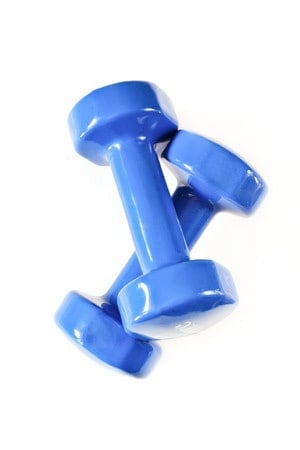 In order to maintain independence and health, a goal that we all strive for, developing an appropriate and effective exercise routine is one of the best things that you can do for yourself.
In order to maintain independence and health, a goal that we all strive for, developing an appropriate and effective exercise routine is one of the best things that you can do for yourself.
Proper exercise that helps maintain health, muscle strength and agility does not require a trip to the gym, expensive equipment or a personal trainer (though you will want to consult your doctor before starting or stopping any kind of exercise routine). Some basic knowledge and a desire to remain fit and active are the primary requirements. Just focus on the four key areas that the National Institutes of Health cite as vital— strength, balance, stretching and endurance—and use items from around the house to get in a daily dose of exercise.
1. Strength Training
Keeping muscles toned and ready for use is extremely important as we age. Strength exercises build a healthy metabolism, help maintain a desirable weight and regulate blood sugar -- all beneficial components of a total wellness routine. And you can easily incorporate strength training into your everyday routine by doing arm and leg lifts as you watch TV or simply toting weights from room to room several times a day.
If you don’t have a set of weights, substitute 16 oz cans of tomatoes or 2 lb bags of sugar from your pantry. The important part of exercise is the movement, not the equipment; benefits accrue from repetition and regularity rather than from one-time or short-term bursts of enthusiasm.
2. Balance & Lower Body Exercise
Better balance decreases the risk of falls and the injuries they cause. The good news is that balance exercises can be performed almost anywhere and at any time. Two of the best are the heel-to-toe walk and the simple (or not so simple, as the case may be) act of standing on one foot. You might feel a bit silly doing them in public, but they’re perfect for the privacy afforded by your own home.
If you are uncertain about your balance, enlist a partner and schedule a 20 or 30-minute workout in one of your senior apartments two or three times a week. Afterwards, enjoy some mental exercise with good conversation over a cup of tea.
3. Stretching Movements
Flexibility, range of movement and continued mobility are the primary goals of stretching exercises. Even though they may seem simple, seniors should check with their personal health care providers to determine the best ways to stretch. There are many types of stretching – some as simple as using a towel to reach over your head and behind your back. Others require you to lie flat on a semi-rigid surface.
A sitting hamstring stretch, for example, is easy, effective and good for your knees and hips. It may also help to alleviate lower back pain.
- While sitting comfortably in a straight chair, keep one foot on the floor with your knee at a 90-degree angle.
- Slowly raise and extend the other leg straight out in front of you.
- Lean forward to reach the outstretched foot and hold for 30 to 60 seconds. You will definitely feel the stretch.
- Relax and repeat with the other leg.
4. Endurance and Cardio Workouts
Walking may be the very best thing you can do for your heart, according to the latest studies. Brisk walking is best, but even if you only take a stroll around the building once a day in the winter, you are helping your heart, boosting your energy levels and being good to your body. If you have a pool available and like to swim, a quick dip is the second best way to workout, according to authorities.
A Few Guidelines to Remember
Whatever you do to maintain your health, there are important principles to remember. Don't continue any exercise until it hurts. Pain and pulled muscles are not fun at any age, but they can be especially worrisome for seniors. Remember to breathe— deeply and regularly. If you practice meditation or have studied yoga or any form of martial arts or Eastern meditation, you know that breath control is a beneficial method of dealing with stress and anxiety. It is also an important aspect of exercise.
Finally, remember that continuing your social activities is, like regular exercise, an important aspect of continued good health and aging gracefully.












